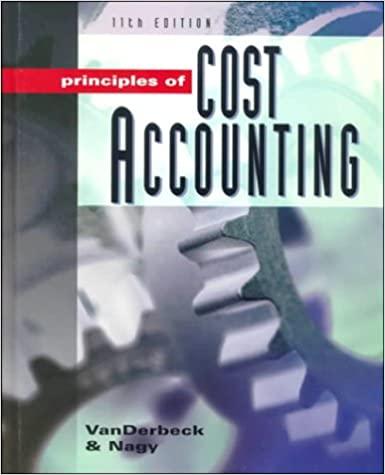Question
1-The statement of changes in stockholders' equity: Multiple Choice Is part of the statement of retained earnings. Shows only the ending balances in stockholders' equity.
1-The statement of changes in stockholders' equity:
Multiple Choice
Is part of the statement of retained earnings.
Shows only the ending balances in stockholders' equity.
Describes changes in paid-in capital and retained earnings subcategories.
Does not include changes in treasury stock.
Is reported by very few companies.
2- Prior to June 30, a company has never had any treasury stock transactions. A company repurchased 100 shares of its common stock on June 30 for $40 per share. On July 20, it reissued 50 of these shares at $46 per share. On August 1, it reissued 20 of the shares at $38 per share. What is the balance in the Treasury Stock account on August 2?
Multiple Choice
$5,050.
$2,600.
$100.
$1,200.
$0.
3- Which of the following is true of a stock dividend?
Multiple Choice
It is a liability on the balance sheet.
The decision to declare a stock dividend resides with the shareholders.
Transfers a portion of equity from retained earnings to a cash reserve account.
Does not affect total equity, but transfer amounts between the components of equity.
Reduces a corporation's assets and stockholders' equity.
4- All of the following statements regarding stock dividends are true except:
Multiple Choice
Directors can use stock dividends to keep the market price of the stock affordable.
Stock dividends provide evidence of management's confidence that the company is doing well.
Stock dividends do not reduce assets or equity.
Stock dividends decrease the number of shares outstanding.
Stock dividends transfer a portion of equity from retained earnings to contributed capital.
5- Alto Company issued 7% preferred stock with a $100 par value. This means that:
Multiple Choice
Preferred shareholders have a guaranteed dividend.
The amount of the potential dividend is $7 per year per preferred share.
Preferred shareholders are entitled to 7% of the annual income.
The market price per share will approximate $100 per share.
Only 7% of the total paid-in capital can be preferred stock.
6- Mayan Company had net income of $132,000. The weighted-average common shares outstanding were 80,000. The company declared a $27,000 dividend on its noncumulative, nonparticipating preferred stock. There were no other stock transactions. The company's earnings per share is:
Multiple Choice
$1.65.
$1.99.
$1.31.
$0.34.
$4.89.
7- The following data has been collected about Keller Company's stockholders' equity accounts:
| Common stock $10 par value 20,000 shares authorized and 10,000 shares issued, 9,000 shares outstanding | $100,000 |
| Paid-in capital in excess of par value, common stock | 50,000 |
| Retained earnings | 25,000 |
| Treasury stock | 11,500 |
Assuming the treasury shares were all purchased at the same price, the number of shares of treasury stock is:
Multiple Choice
1,150.
1,000.
575.
11,000.
21,000.
8- A company issued 60 shares of $100 par value common stock for $7,000 cash. The total amount of paid-in capital in excess of par is:
Multiple Choice
$100.
$600.
$1,000.
$6,000.
$7,000.
9- Sweet Companys outstanding stock consists of 1,000 shares of cumulative 5% preferred stock with a $100 par value and 5,000 shares of common stock with a $10 par value. During the first three years of operation, the corporation declared and paid the following total cash dividends.
| Dividend Declared | ||
| Year 1 | $ | 2,000 |
| Year 2 | $ | 6,000 |
| Year 3 | $ | 32,000 |
The total amount of dividends paid to preferred and common shareholders over the three-year period is:
Multiple Choice
$15,000 preferred; $25,000 common.
$11,000 preferred; $29,000 common.
$5,000 preferred; $35,000 common.
$12,000 preferred; $28,000 common.
$10,000 preferred; $30,000 common.
10- Achieving an increased return on common stock by paying dividends on preferred stock at a rate that is less than the rate of return earned with the assets invested from the preferred stock issuance is called:
Multiple Choice
Financial leverage.
Discount on stock.
Premium on stock.
Preemptive right.
Capital gain.
Step by Step Solution
There are 3 Steps involved in it
Step: 1

Get Instant Access to Expert-Tailored Solutions
See step-by-step solutions with expert insights and AI powered tools for academic success
Step: 2

Step: 3

Ace Your Homework with AI
Get the answers you need in no time with our AI-driven, step-by-step assistance
Get Started


